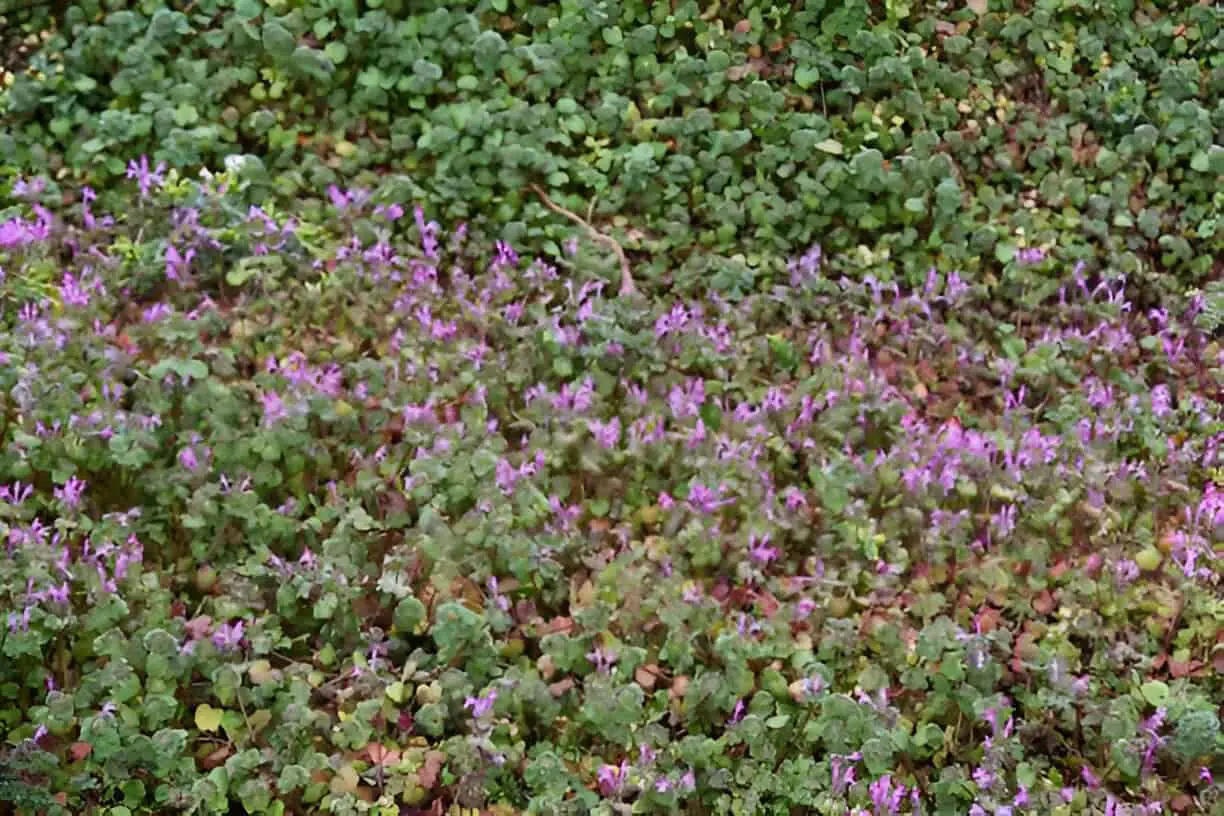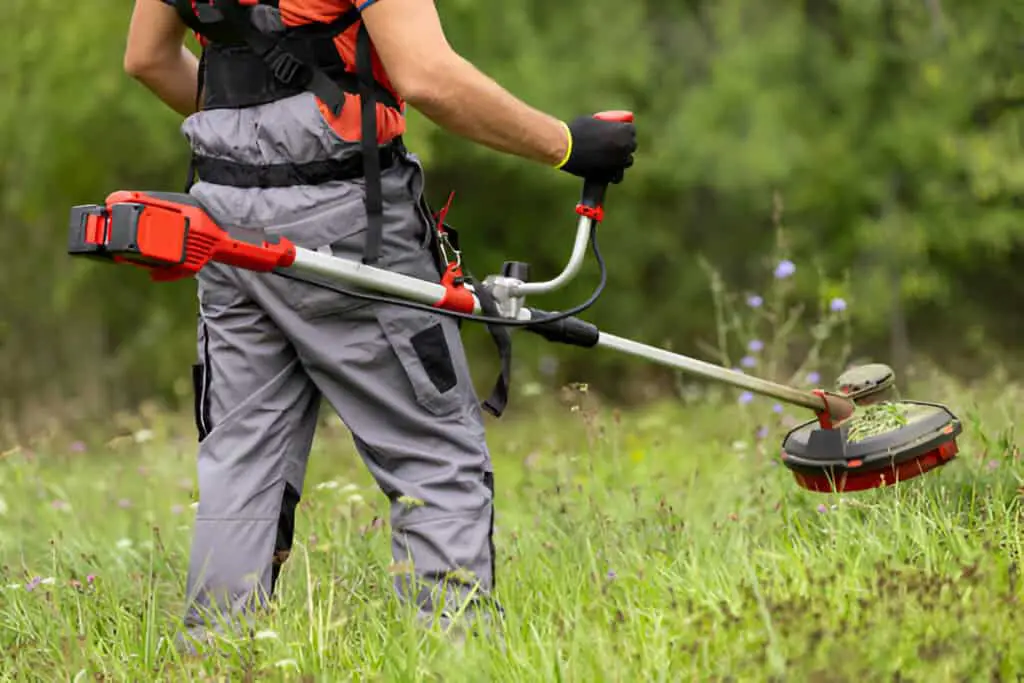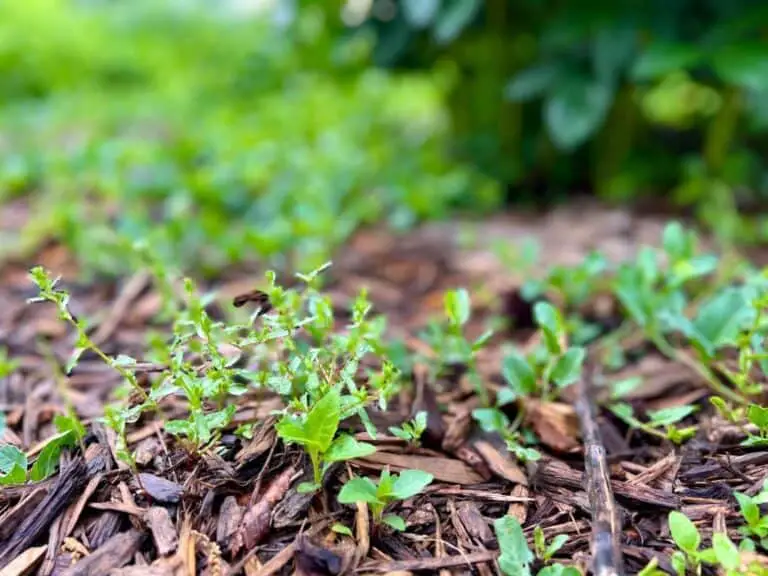Henbit Weeds Taking Over? Here’s How to Eliminate Them for Good!

If your lawn has fallen prey to the ever-persistent henbit weed, you’re not alone. In Texas, henbit weeds are a familiar foe for many homeowners. These fast-growing nuisances can quickly take over, stealing valuable nutrients and moisture from your lawn. But don’t worry; with the right approach, you can tackle them head-on and reclaim your yard.
Let me walk you through how to get rid of these stubborn weeds and keep them from making a comeback.
What Is Henbit?

Henbit, or Lamium amplexicaule, might sound fancy, but it’s just a common weed that likes to wreak havoc on lawns. This annual weed starts growing in the fall and really kicks into gear when spring rolls around, spreading its fuzzy leaves and sprouting colorful purple flowers.
Henbit can grow up to a foot tall, making it not just an eyesore but a significant competitor for your lawn’s resources. The more it grows, the more it hogs all the water and nutrients that your grass and other plants desperately need.
Why Henbit Loves Open Spaces
Henbit thrives in areas where your grass is thin or where there’s open soil. These spots are like a red carpet for weeds, giving them easy access to moisture and nutrients without any competition.
The good news? You can easily stop this from happening by making sure your lawn is full and thick.
The Fix: Fill in Bare Patches
Whenever you notice bare patches of soil in your yard, don’t wait for henbit to move in. Reseed those areas with a mix of grass seed and fertilizer. Over time, this will help fill in any gaps and create a thick carpet of grass that can hold its own against any weeds trying to sneak through.
| Action | Benefit |
| Reseed bare patches | Prevents henbit from taking root |
| Apply fertilizer | Boosts grass growth and nutrient uptake |
| Also read: Preventing Weeds Around Trees |
Raise Your Lawnmower Blade

You might think that setting your lawnmower to the lowest possible blade height will save you time, but that short grass comes with a cost. Henbit loves low-cut grass because it allows more sunlight to hit the soil, giving those weed seeds a perfect environment to sprout.
The Fix: Set Your Mower to 2 Inches or Higher
By keeping your grass at a taller height, usually around 2-3 inches, you help block sunlight from reaching the soil where henbit seeds are lying in wait. Plus, taller grass means a healthier, thicker lawn that’s better equipped to outcompete those pesky weeds.
| Mowing Height | Effect on Henbit Growth |
| Low (under 2″) | Increases weed growth |
| High (2″+) | Blocks sunlight, reduces weed growth |
Apply Herbicide for Targeted Control
Sometimes, even with the best lawn care practices, henbit manages to break through. When that happens, it’s time to bring out the big guns: herbicides. One of the most effective store-bought options is 2,4-D Amine, a selective herbicide that targets henbit without damaging your grass.
Alternatively, you can go the DIY route and whip up your own herbicide using a mix of vinegar, water, and a little dish soap. Just make sure to apply it carefully, targeting only the henbit and not the surrounding grass.
Store-Bought vs. Homemade Herbicides
| Herbicide | Effectiveness | Cost |
| 2,4-D Amine | Highly effective for henbit control | Moderate |
| Vinegar + Soap | Eco-friendly, but slower to work | Low |
Organic Methods to Control Henbit
When it comes to tackling henbit weeds, going organic can be a game changer. For those small infestations that seem to pop up unexpectedly, hand-pulling can be an effective and environmentally friendly method. Imagine strolling through your garden, feeling the earth beneath your fingers as you gently uproot the pesky weeds.
Timing is key here—make sure to pull them before they flower and set seed, ideally when the soil is damp, making it easier to remove the entire root. Plus, this hands-on approach allows you to get a closer look at your garden’s health, spotting other potential issues before they escalate.
But what if the infestation is larger than a few rogue weeds? Enter natural herbicides. Several options work wonders without the harsh chemicals. For instance, vinegar, especially when mixed with salt and a few drops of dish soap, can serve as a potent weed killer.
Simply apply it directly to the henbit on a sunny day for maximum effectiveness. You can even create a spray solution using boiling water—just pour it over the henbit to scorch those pesky leaves. Embracing these organic methods not only keeps your garden healthy but also promotes a sustainable ecosystem.
Conclusion
Don’t let henbit steal the show in your yard. By filling in bare patches, keeping your grass at the right height, and using targeted herbicide treatments, you can stop henbit in its tracks and keep your lawn looking lush and vibrant. The battle with weeds may feel never-ending, but with a little effort, you can stay one step ahead and enjoy a weed-free yard all season long.






